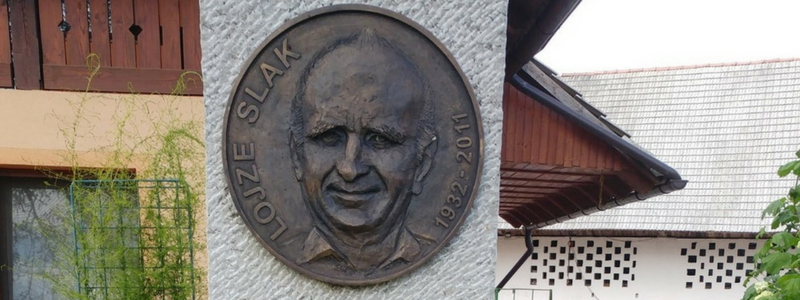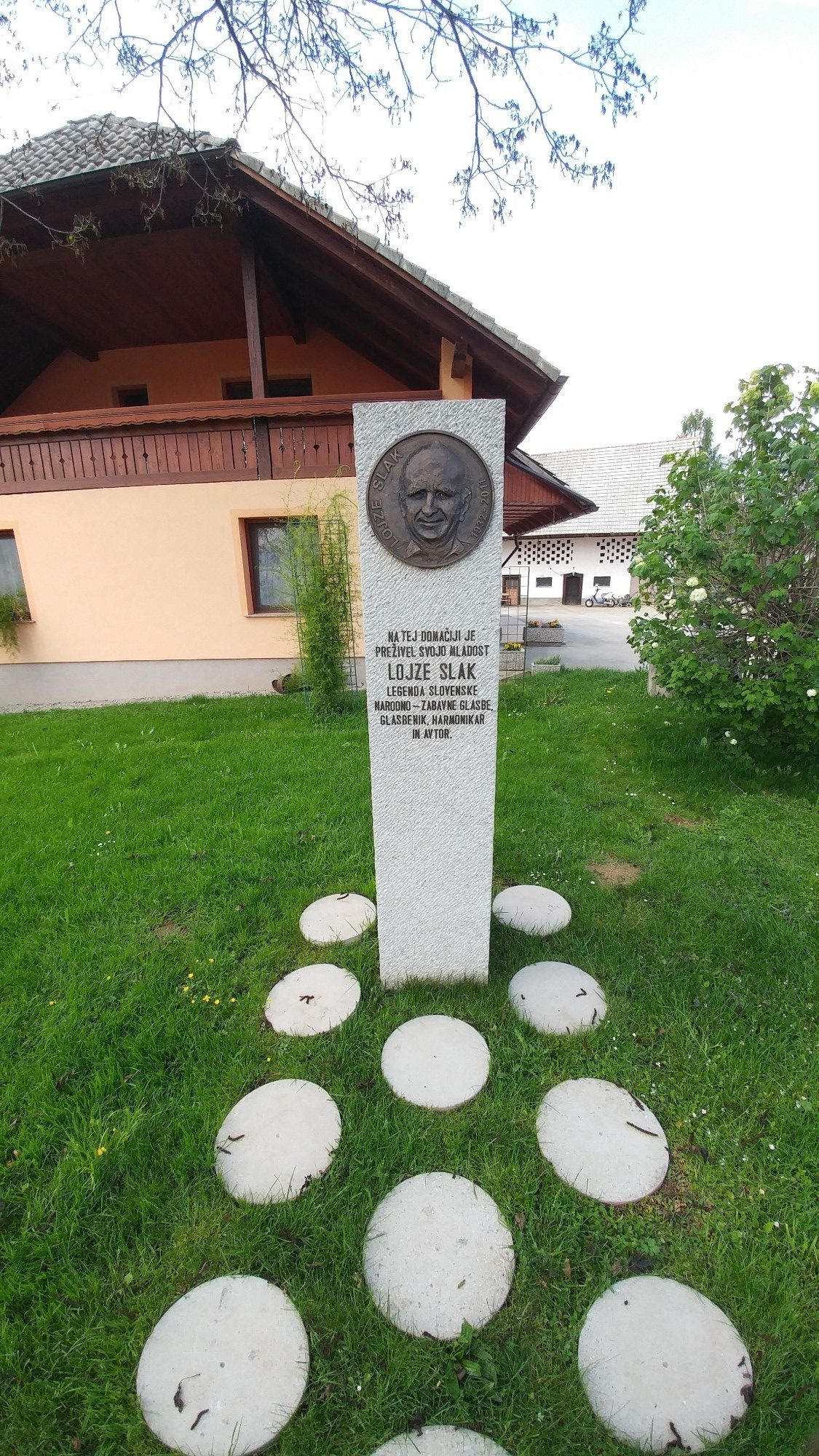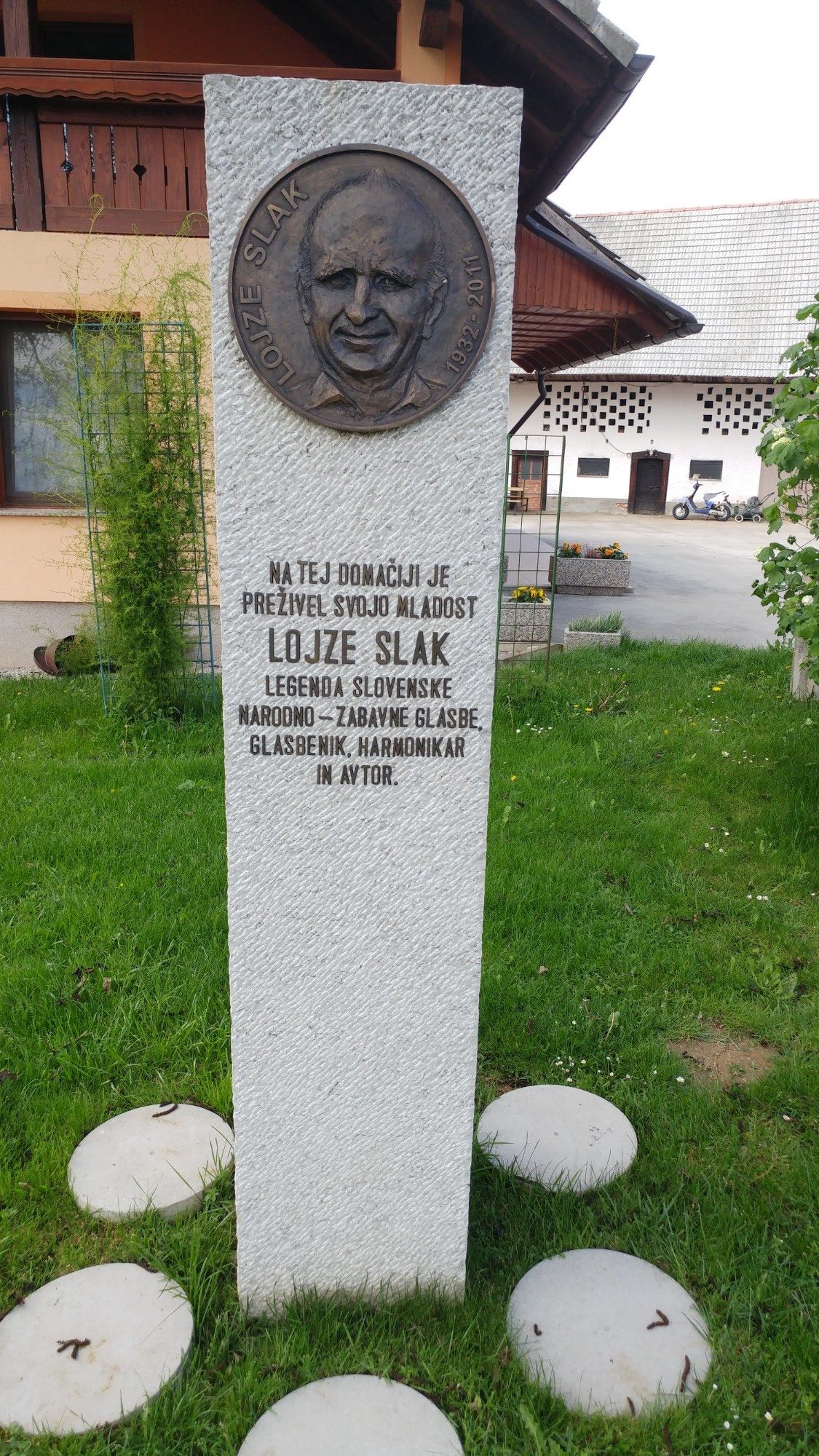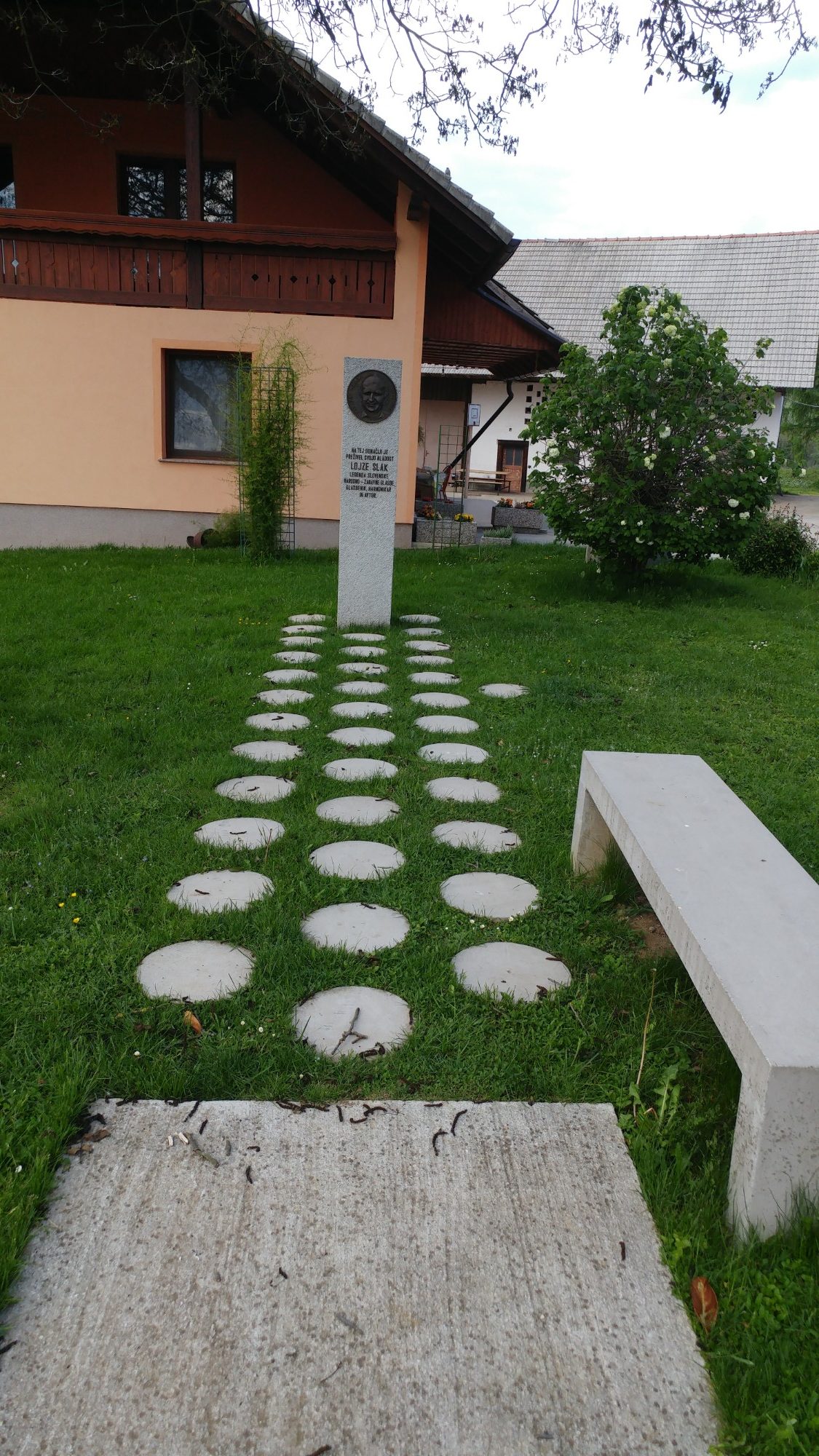On 22 June 2013, at the Barbo Homestead in Mali Kal where Lojze Slak spent his youth, a monument was erected in memory of this legendary pop-folk musician. The memorial (a stone column bearing a bronze plaque with a portrait, dedication and a line from a famous composition by Slak, Pa spet bom vzel harmoniko (I Will Get My Accordion Again), on the back) was designed by architect Tomaž Slak in cooperation with Marija Mojca Pungerčar and Leopold Pungerčar. The shape of the stone path leading to the monument follows the design of the diatonic accordion keyboard and includes the famous Slak button.
Lojze Slak
Pop-folk musician Lojze Slak (1932–2011) was born in the village of Jordankal near Mirna Peč in the Slovenian Dolenjska (Lower Carniola) region. In his youth, he was initiated into the music of the diatonic button accordion, the so-called ‘freitoner’, by his accordionist uncle. At fifteen, he began to acquire experience by performing at weddings, and debuted before a wider public in 1957, taking part in a radio talent show, Pokaži, kaj znaš. In the early 1960s, his Trio Lojzeta Slaka (Lojze Slak Trio) entered a competition for new music groups, attaining their first notable success and appreciation by the local public with the composition Domači vasici (To My Native Village). The big turning point was when his instrumental trio and a vocal quintet, Fantje s Praprotna, combined to form a large ensemble, which significantly boosted their popularity and led to unprecedented heights. This type of configuration, an instrumental trio and male polyphonic singing, set the model for the emerging pop-folk ensembles, which emulated it to counterpoint the quintets of the Slavko Avsenik type.
Ansambel Lojzeta Slaka (The Lojze Slak Ensemble) gained renown as one of the most distinctive and original Slovenian ensembles, winning national and international acclaim. Besides crossing national borders, Slak also extended the boundaries of popular genres. In 2005, he arranged Nekaj sladkega (Something Sweet), a song by a Slovenian rock band, Big Foot Mama. The two groups went on to blend pop-folk and rock music in a jointly recorded track, Pomlad (Spring). Throughout a career spanning fifty years, Slak wrote over 500 compositions, creating countless evergreen hits with his ensemble, songs that gained popularity both in Slovenia and abroad. Some of his most notable compositions include Čebelar (Beekeeper), V dolini tihi (In a Silent Valley), Čez Gorjance (Over the Gorjanci Mountain Range), Po dekle (Courting a Girl), Mama (Mother), etc.
Unlike Slavko Avsenik, who played the piano-accordion, Slak fostered interest in and appreciation for the diatonic accordion, which gained popularity as an important token of remembrance and musical instrument through the accordionist’s influence, both among Slovenian immigrants in America and Canada and the local population there. In innovating his instrument, adding two extra ‘Slak’ buttons – a fourth bass button and a sixth button on the right-hand, melody-side keyboard, Slak left a significant personal stamp on the diatonic accordion.
Maia Juvanc



